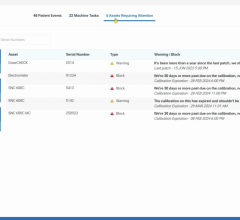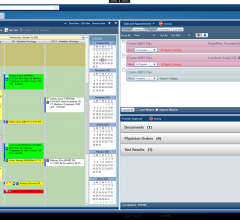If you look across the total oncology enterprise at most institutions today, you will discover a limited approach to enterprise-wide integration of oncology information management systems (OIMS). In truth, the oncology world is just beginning to discover the importance of integrating information systems/information technology (IS/IT) solutions across diverse oncology practices, with industry interest ramping up over the past decade.
The complex nature of oncology definitely lends itself to the need for better integration of patient information from both the clinical treatment side and the administrative side. By necessity, cancer care has evolved as a multidisciplinary treatment arena that requires input, direction and resources from a wide variety of matter experts and specialized providers. Patients can enter the diagnostic and treatment cycle from an innumerable variety of entry points. Likewise, methods for treating cancers vary widely and cross several venues, requiring significant coordination of effort and constant follow-up regimen and validation of results.
This complex web of total provider care and critical performance assessment necessitates a strong and viable communications network. To this end, oncology businesses need IS/IT infrastructures that promote multidisciplinary functionality within the existing network of providers. For many institutions, the network of providers and agency participants is extensive and includes most of the participants and/or program aspects outlined in the following chart. Furthermore, the demographic density and geographic dispersion of support is frequently as complex as the degree of multidisciplinary functionality within the local oncology practices.
Enterprise-wide integration of OIMS significantly improves an organization’s ability to improve business operations as well. For instance, the ability to improve business operations flows directly from the ability to discover opportunities for change within administration, patient care, drug usages, process interventions, supply utilization and any number of similar daily drivers to cost and quality. Some of the more common issues that restrict performance improvement objectives include:
• Very little ability to manage information coherently
• Wide dispersion of information
• No quick way to spot trends in performance
• Limited ability for administrators and managers to see underlying problems
• Cause and effect relationships not easy to spot
• No simple way to guarantee accuracy and completeness of required information
• Very little systematic sharing of information across the oncology patient enterprise
• Analysis and use of data is labor intensive
• Improving data integrity requires significant human intervention
Operational improvement is an important consideration for developing a highly integrated oncology enterprise. Organizations with the best chance for continued profitability and/or sustainability will be those that are well equipped to understand the individualistic nature of cost and performance variables. A strong, integrated IS/IT platform is foundational to this requirement. Good data capture and usage is of paramount importance to linking measurable outcomes to organizational objectives for both the quality of care and the cost of the care extended to the oncology patients. Some of the more important outcomes that can be measured within an integrated oncology arena include: staging perspectives; drug/supply/other metrics; clinical comparisons; treatment predictability/costs; trending information/demographic studies; cancer incidence rates; best practice procedures; therapy choices/quality/prevention metrics; and profitability/statistical priorities.
Without a doubt, enterprise-wide integration of oncology practices is a worthwhile goal for most institutions to pursue. Vendor solutions and options for enterprise-wide connectivity are proliferating at an astounding rate. Given the complex nature of oncology practice today, many institutions will find enterprise-wide integration an excellent strategy for improving the overall quality of oncology patient care and combating the seemingly never-ending rise of healthcare operational costs.
© Copyright Wainscot Media. All Rights Reserved.
Subscribe Now


 July 11, 2024
July 11, 2024 








